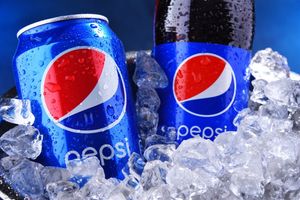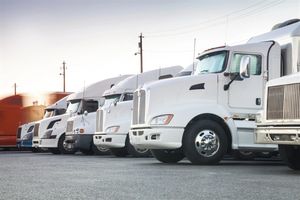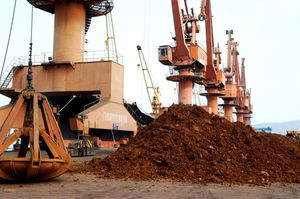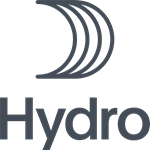Financial News
Norsk Hydro: Changing the aluminium game - Strengthening position in challenging markets
Hydro’s adjusted EBITDA for the fourth quarter of 2023 was NOK 3,737 million, down from NOK 7,184 million for the same quarter last year.
Full year 2023 adjusted EBITDA amounted to NOK 22,258 million, compared with NOK 39,664 million in 2022. Lower aluminium and alumina sales prices, lower Extrusions and recycling volumes, higher fixed costs, and lower contributions from sale of power negatively impacted results, partly offset by lower raw material costs, higher Extrusions margins and currency.
- Weaker results in challenging markets, managing short term volatility and freeing up cash
- Exceeding 2023 improvement targets and commercial ambitions
- Growing in recycling by increasing capacity and post-consumer scrap upscaling
- Delivering on decarbonization roadmap across the value chain, pushing boundaries with Hydro CIRCAL
- Proposed cash dividend of 59 percent of adjusted net income (NOK 2.5 per share) and NOK 2 billion share buyback program
“Challenging markets led to a weaker result in the fourth quarter of 2023. We are managing the short-term volatility through continued execution on our improvement programs and commercial ambitions. This enables us to continue our positioning in pursuit of the long-term value creation opportunities for aluminium,” says President and CEO, Hilde Merete Aasheim.
All business areas, except Bauxite & Alumina, delivered returns above their cost of capital in challenging markets during 2023. The adjusted RoaCE for 2023 ended at 7.1 percent, heavily influenced by challenging alumina market conditions, as well as high growth and return-seeking investments in the year. Over the last 5 years, the adjusted RoacE has been 11 percent, above Hydro’s target of 10 percent over the cycle.
Due to expected challenging alumina markets in the short and medium term, as well as long-term power price insecurity for the partly owned Tomago aluminium plant in Australia, Hydro reported a total impairment loss of approximately NOK 4.9 billion in the fourth quarter results. However, during the last couple of months the alumina market has tightened, and PAX price increased on the back of refinery curtailments and concerns around bauxite shipments from Guinea.
In the aluminium market, demand growth for residential building and construction, and industrial segments has continued to remain negative due to macro-economic headwinds, while demand for automotive has been performing better as the share of electric vehicle registrations over total auto registrations has increased. At the same time, lower trailer build rates in North America have started to negatively impact demand in the transport segment. A weakening extrusion ingot market is further putting pressure on product premiums and several remelters are faced with negative margins, consequently.
“With a solid balance sheet, strong improvement drive and targeted measures to free up cash from working capital which surpassed previous guidance, we propose shareholder distributions in line with our policy,” says Aasheim.
Hydro responds with mitigating measures to handle short-term market volatility. Within recycling and Hydro Extrusions, current production flexibility and adaption abilities are utilized to maneuver falling demand. Hydro is reducing inventories to release cash, realizing a working capital release of NOK 3 billion in the fourth quarter, and NOK 7 billion cash effective release for the full year of 2023. Hydro’s robustness is also strengthened as the improvement program and commercial ambitions are ahead of the target, with an accumulated delivery of NOK 11.6 billion by 2023.
These initiatives and Hydro’s solid balance sheet, enable shareholder distributions above previous guidance, as the Board of Directors propose to distribute NOK 7 billion in shareholder distribution, which represents approximately 81.5 percent of the 2023 adjusted net income, as a combination of NOK 2.5 per share of cash dividends, 59 percent of adjusted net income, and NOK 2 billion of share buybacks. The final shareholder distribution for 2023 is subject to approval by the Annual General Meeting (AGM) on May 7, 2024.
During the fourth quarter, an important milestone towards the 2025 strategy was the completion of the USD 1.11 billion transaction for the sale of 30 percent of the Brazilian alumina refinery Hydro Alunorte and Hydro’s 5 percent interest in the bauxite producer Mineracão Rio do Norte (MRN). With the transaction taking place on December 1, 2023, Hydro will be more balanced in relation to the demand of alumina from the aluminium smelter portfolio. The transactions enable capital reallocation into strategic growth areas, strengthening Hydro’s earnings resilience in a rapidly changing global landscape.
Towards 2030, Hydro is stepping up growth investments in Extrusions and recycling, and heightening ambitions in renewable power generation to ensure affordable renewable energy throughout the aluminium value chain at attractive returns. In addition, Hydro remains committed to forcefully executing its decarbonization and technology roadmap, actively contributing to nature conservation and a just transition, and collaboratively shaping the market for greener aluminium in partnership with customers. During the fourth quarter, several strategic steps have been taken toward delivering on the ambitious 2030 targets.
Achieving a recycling EBITDA of NOK 5-8 billion by 2030 means building, expanding and upgrading recycling facilities. The greenfield recycler Hydro Cassopolis in Michigan, U.S. was officially opened on November 16, aiming to supply aluminium and in particular Hydro CIRCAL, to the automotive and the U.S. market. Further, the investment into another greenfield recycler in Torija, Spain was approved, with an estimated investment of EUR 180 million. The final building decision is expected in the second half of 2024. The two recyclers will in total contribute with an additional 240,000 tonnes annual recycling capacity, including 110,000 tonnes post-consumer scrap capacity (PCS).
By the end of 2023, Hydro has 560 kt post-consumer scrap consumption capacity, achieving the 2025 target of 520-670 kt. As part of this achievement, the recently announced joint venture with Padnos enables more upcycling of 20,000 tonnes annual PCS, by industrializing Hydro’s proprietary sorting technology, HySort, bringing this advanced aluminium sorting technology to the U.S. By 2030, Hydro targets an annual PCS capacity between 850-1,200 kt, pending capital availability.
An enabler to produce more low-carbon aluminium is access to renewable power, and several projects to deliver on this agenda have been initiated in recent months. In Energy, Hydro and Lyse have applied for a license for five new hydropower plants in Røldal-Suldal to add an additional gross 800 GWh annual power production and 650 MW output. Hydro Rein is signing a cooperation agreement with Årdal Energi to develop renewable projects in Årdal. The parties will collaborate to identify energy solutions contributing to new green industry in Årdal, as well as strengthen existing industry.
In November, Hydro was notified about a company reorganization of Markbygden Ett AB, where Hydro Energi AS has a long-term power purchase agreement (PPA) since 2017 for an annual baseload of 1.65 TWh. During the fourth quarter, the external power sourcing volumes in Energy were affected by non-delivered volumes of 0.5 TWh, and a non-delivery of 1.3 TWh in total for 2023. Hydro continues to seek compensation for the non-delivered volumes.
During the fourth quarter, Hydro has made several steps towards carbon reduction goals. Targeting a 30 percent reduction in carbon emissions by 2030, is primarily driven by fuel switching and boiler electrification at the Alunorte alumina refinery, allowing Alunorte to supply one of the lowest-carbon smelter grade Alumina available. The floating storage and regasification unit (FSRU) with natural gas to replace heavy fuel oil at Alunorte is just days away from the arriving at the harbor in Barcarena. Despite Hydro’s lower ownership share in Alunorte, reducing the impact of these efforts in Hydro’s numbers, Hydro is committed to maintain a 30 percent reduction target by 2030, effectively stretching its ambitions, as announced at the Capital Markets Day in November.
The two technology paths to zero, HalZero for new capacity and carbon capture for existing smelters, are progressing according to plan toward industrial scale by 2030. The construction of a new HalZero test facility in Porsgrunn, Norway was officially approved during the fourth quarter. At the 2023 Climate Change Conference in Dubai on December 5, Hydro received recognition for the HalZero technology from the COP28 UAE Presidency as an Energy Transition Changemaker for pioneering the green aluminium transition.
To further strengthen the commitment to decarbonization targets and the green aluminium transition, Hydro joined forces with the world’s leading global companies through the First Movers Coalition (FMC) in December. Hydro will take the FMC Aluminium sector commitment via its Extrusions business, committing to at least 10 percent (by volume) of all primary aluminium procured externally annually, being near-zero emissions by 2030. Hydro has also, as one of only two suppliers in the aluminium industry, qualified as an FMC supplier with Hydro REDUXA 3.0.
At COP28, Hydro also announced a strategic partnership with Volvo Group to enable the global transport manufacturer to reach its 2040 target of delivering net-zero vehicles. As partners in the FMC, the two companies further pledged to support each other’s journeys towards zero-emission value chains.
Delivering low-carbon products creates value for Hydro’s customers and enables premium pricing with bottom line effects for the company. As part of the roadmap towards 2030, Hydro will continue to develop its product offering both within primary and recycled aluminium, and drive down product footprint. As of January 2024, Hydro can deliver Hydro CIRCAL recycled aluminium with a documented carbon footprint of 1.9 kg of CO2e per kg aluminium, down from previous 2.3 kg of CO2e per kg, through advances in sourcing, sorting and traceability of post-consumer aluminium scrap.
Based on the greener premiums Hydro is receiving today and the capacity available in 2030, there is a potential for NOK 2 billion in greener premium earnings uplift as Hydro further develops and offers industry leading products. This potential will depend on a range of factors and how the market develops, but with a current starting point and roadmap towards zero, Hydro is dedicated to creating value for customers, creating value for Hydro, all while driving down CO2 emissions in a responsible way.
Results and market development per business area
Fourth quarter adjusted EBITDA for Bauxite & Alumina increased compared to the fourth quarter of 2022, mainly driven by lower raw material prices, partly offset by currency effects, lower bauxite production and fixed costs. PAX traded in a narrow range between USD 326 per mt and USD 339 per mt until the last week of the quarter, when PAX increased driven by higher Chinese alumina prices due to Chinese refinery curtailments and concerns around bauxite shipments from Guinea following an explosion at the country’s main fuel depot in Conakry. PAX ended the quarter at USD 350 per mt. Compared to the fourth quarter of 2022, the average Platts alumina index was USD 16 per mt higher.
Adjusted EBITDA for Energy in the fourth quarter decreased compared to the same period last year. Lower prices, lower gain on price area differences, and lower trading and hedging results were partly offset mainly by higher production and no fourth quarter loss from a 12-month internal fixed price purchase contract from Aluminium Metal. Average Nordic power prices in the fourth quarter 2023 ended significantly below prices in the same quarter last year, but above prices in the previous quarter. Increased prices compared to the previous quarter, can primarily be explained by below normal inflow and wind, as well as seasonally higher demand. Price area differences between the south and the north of the Nordic market region declined compared to the previous quarter, and were significantly lower than the same quarter last year.
Adjusted EBITDA for Aluminium Metal decreased in the fourth quarter of 2023 compared to the fourth quarter of 2022, mainly due to lower all-in metal prices and reduced contribution from power sales, partly offset by reduced raw material cost, adjusted CO2 compensation and positive currency effects. Global primary aluminium consumption was up 2 percent compared to the fourth quarter of 2022, driven by a 3 percent increase in China. The three-month aluminium price increased throughout the fourth quarter of 2023, starting the quarter at USD 2,321 per mt and ending at USD 2,384 per mt.
Adjusted EBITDA for Metal Markets improved in the fourth quarter 2023 compared to the same quarter last year. Lower results from recyclers due to reduced premiums in a weakening extrusion ingot market were offset by stronger results from sourcing and trading activities, and positive inventory valuation and currency effects.
Extrusions adjusted EBITDA for the fourth quarter 2023 is slightly lower than the same quarter last year, driven by lower sales volumes, and higher fixed and variable costs, positively offset by increased sales margin and currency effects. European extrusion demand is estimated to have decreased 14 percent in the fourth quarter of 2023 compared to the same quarter last year, but increasing 3 percent compared to the third quarter of 2023, as market demand has started to stabilize, although at moderate levels. Demand growth for residential building and construction, and industrial segments have continued to remain negative due to macro-economic headwinds, while demand for automotive has been performing better as the share of electric vehicle registrations over total auto registrations has increased. North American extrusion demand is estimated to have decreased 9 percent during the fourth quarter of 2023, compared to the same quarter last year, and 7 percent compared to the third quarter of 2023. Demand continues to be weak in the residential building and construction sector, while demand is still positive in the automotive segment. At the same time, lower trailer build rates have started to negatively impact demand in the transport segment.
Other key financials
Compared to the third quarter, Hydro’s adjusted EBITDA decreased from NOK 3,899 million to NOK 3,737 million in the fourth quarter 2023. Lower realized aluminium and alumina prices combined with lower Extrusions and recycling volumes were partly offset by lower raw material costs and positive currency effects.
Full year 2023 adjusted EBITDA amounted to NOK 22,258 million, compared with NOK 39,664 million in 2022. Lower aluminium and alumina sales prices, lower Extrusions and recycling volumes, higher fixed costs, and lower contributions from sale of power negatively impacted results, partly offset by lower raw material costs, higher Extrusions margins and currency.
Net income (loss) from continuing operations amounted to NOK (2,771) million in the fourth quarter of 2023. Net income (loss) from continuing operations included an impairment loss of NOK 4,421 million, a NOK 1,227 million unrealized derivative gain on LME related contracts, a net foreign exchange gain of NOK 250 million, a NOK 172 million loss from unrealized derivative power and raw material contracts, and NOK 171 million in rationalization charges and closure costs.
Hydro’s net debt decreased from NOK 13.8 billion to NOK 8.2 billion during the fourth quarter of 2023. The net debt decrease was mainly driven by proceeds from sale of shares in Alunorte to Glencore, combined with EBITDA contribution and net operating capital release, partly offset by NOK 4.9 billion investments.
Adjusted net debt decreased from NOK 20.4 billion to NOK 18.0 billion, mainly due to the decrease in net debt of NOK 5.7 billion, which was partially offset by an increase in pension liabilities and financial liabilities from the sale of shares in Alunorte to Glencore.
On January 31, 2024, Hydro finalized the open market repurchase of the 2023-2024 buyback program as announced on September 22, 2023. The total program comprises 32,192,623 shares, of which 21,163,019 shares were repurchased in the market at a weighted average price of NOK 62.13. The remaining 11,029,604 shares will be purchased from the Norwegian state, keeping their ownership interest of 34.26 percent unchanged. The 32,192,623 shares will be cancelled following approval by the annual general meeting in May.
Investor contact:
Martine Rambøl Hagen
+47 91708918
Martine.Rambol.Hagen@hydro.com
Media contact:
Halvor Molland
+47 92979797
Halvor.Molland@hydro.com
The information was submitted for publication from Hydro Investor Relations and the contact persons set out above. Certain statements included in this announcement contain forward-looking information, including, without limitation, information relating to (a) forecasts, projections and estimates, (b) statements of Hydro management concerning plans, objectives and strategies, such as planned expansions, investments, divestments, curtailments or other projects, (c) targeted production volumes and costs, capacities or rates, start-up costs, cost reductions and profit objectives, (d) various expectations about future developments in Hydro's markets, particularly prices, supply and demand and competition, (e) results of operations, (f) margins, (g) growth rates, (h) risk management, and (i) qualified statements such as "expected", "scheduled", "targeted", "planned", "proposed", "intended" or similar. Although we believe that the expectations reflected in such forward-looking statements are reasonable, these forward-looking statements are based on a number of assumptions and forecasts that, by their nature, involve risk and uncertainty.
Various factors could cause our actual results to differ materially from those projected in a forward-looking statement or affect the extent to which a particular projection is realized. Factors that could cause these differences include, but are not limited to: our continued ability to reposition and restructure our upstream and downstream businesses; changes in availability and cost of energy and raw materials; global supply and demand for aluminium and aluminium products; world economic growth, including rates of inflation and industrial production; changes in the relative value of currencies and the value of commodity contracts; trends in Hydro's key markets and competition; and legislative, regulatory and political factors. No assurance can be given that such expectations will prove to have been correct. Except where required by law, Hydro disclaims any obligation to update or revise any forward-looking statements, whether as a result of new information, future events or otherwise. This information is considered to be inside information pursuant to the EU Market Abuse Regulation and is subject to the disclosure requirements pursuant to Section 5-12 the Norwegian Securities Trading Act.
Attachments

More News
View More





Quotes delayed at least 20 minutes.
By accessing this page, you agree to the following
Privacy Policy and Terms Of Service.




